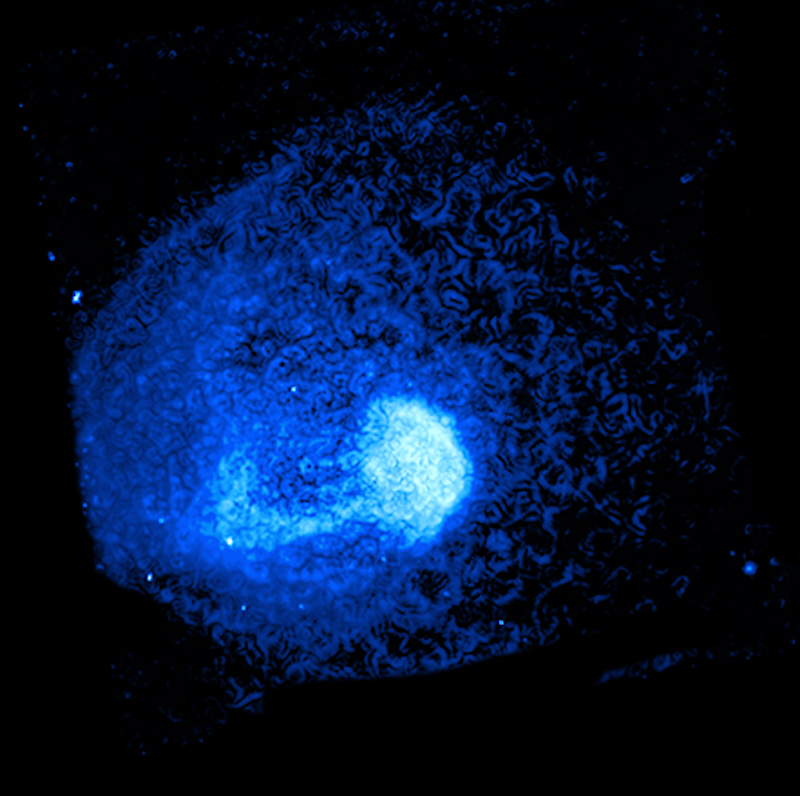
 Credit: NASA/CXC/Leiden Univ./A. Botteon et al.
Credit: NASA/CXC/Leiden Univ./A. Botteon et al.
Collision of Clusters
Clusters of galaxies, groups of hundreds to thousands of individual galaxies bound by their mutual gravitational attraction, are the largest bound structures in the Universe. Understanding how the material Universe grows and evolves is largely a problem of understanding the processes by which clusters of galaxies evolve. Galaxy clusters are really just enormous collections of Dark Matter; the stars in the member galaxies constitute only a tiny bit of the total mass of the cluster. Stars don't even constitute most of the normal matter from the cluster; most of this normal matter, protons, electrons, neutrons and stuff, is found in the hot gas between the member galaxies, and this gas is so hot it only emits in the X-ray band. Galaxy clusters can even form gravitational bonds with other clusters (or even many such clusters), forming so-called "superclusters". Sometimes, one cluster can collide with another, producing cosmic fireworks (on scales large in space and long in time). The image above is an X-ray image from the Chandra X-ray Observatory of a cluster called Abell 1775. Abell 1775, nearly a billion lightyears from earth, is actually composed of a small subcluster smashing into a larger one - or at least that's what happened about a billion years before this image was taken. The image shows X-rays (colored blue) from the hot intracluster gas that is stirred up and shaken by this titanic collision. Of particular note is the peculiar X-ray "tail" curving to the left near the center of the image. The sharp edge near the upper left of the X-ray image marks a "cold front" where density and temperature abruptly drop. These features are important evidence about how clusters merge and how they might help drive growth of supermassive black holes, but there's still some debate about whether these features are evidence of the small cluster sloshing within the larger cluster, or slingshotting through it.
Published: August 16, 2021
<
HEA Dictionary ● Archive
● Search HEAPOW
● Other Languages
● HEAPOW on Facebook
● Download all Images
● Education ● HEAD
>

Each week the HEASARC
brings you new, exciting and beautiful images from X-ray and Gamma ray
astronomy. Check back each week and be sure to check out the HEAPOW archive!
Page Author: Dr. Michael F. Corcoran
Last modified Monday, 26-Feb-2024 17:33:51 EST


